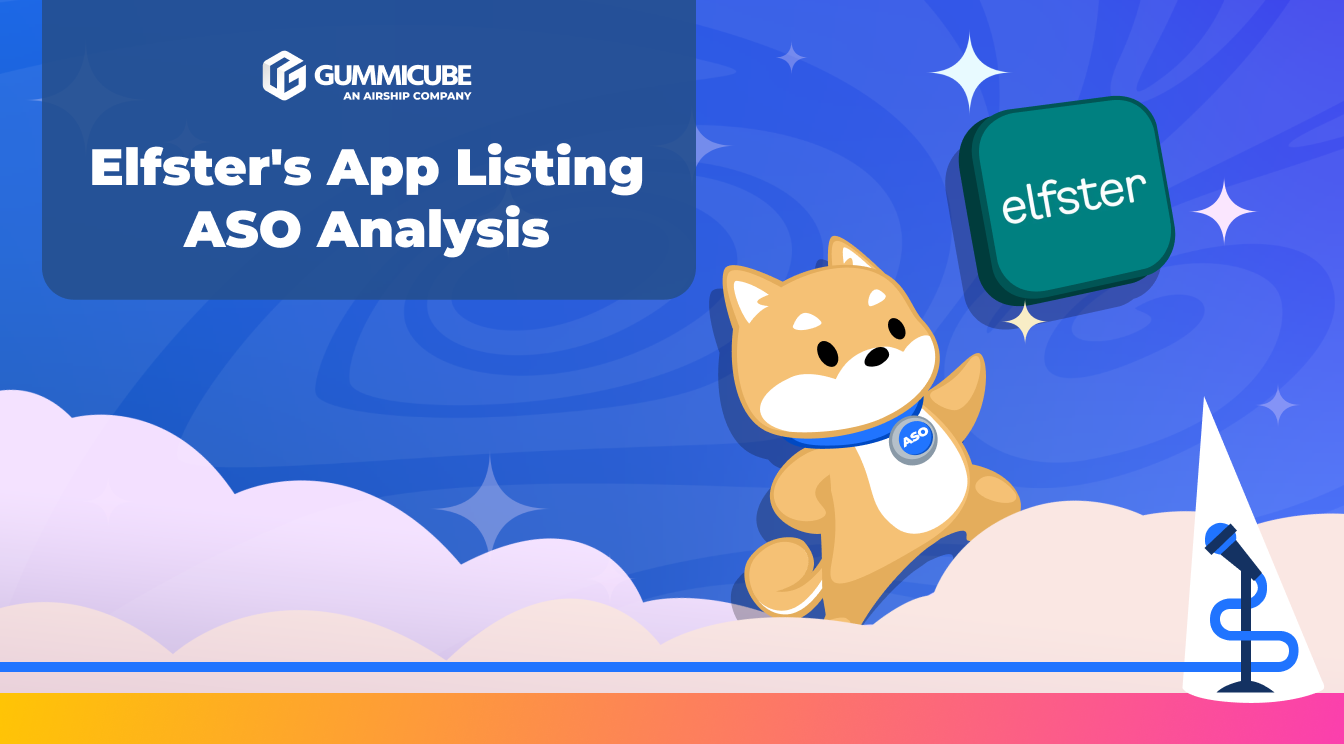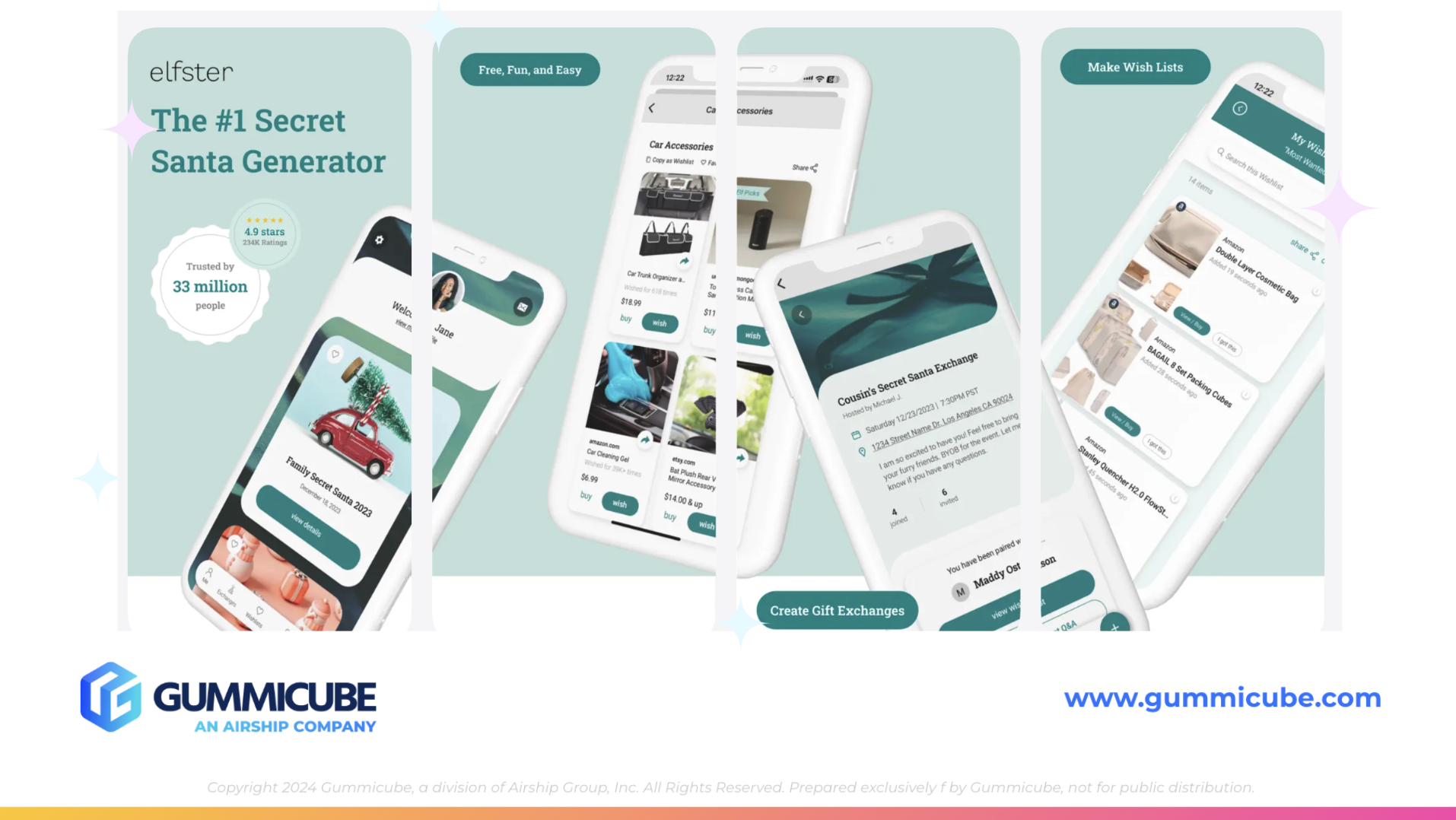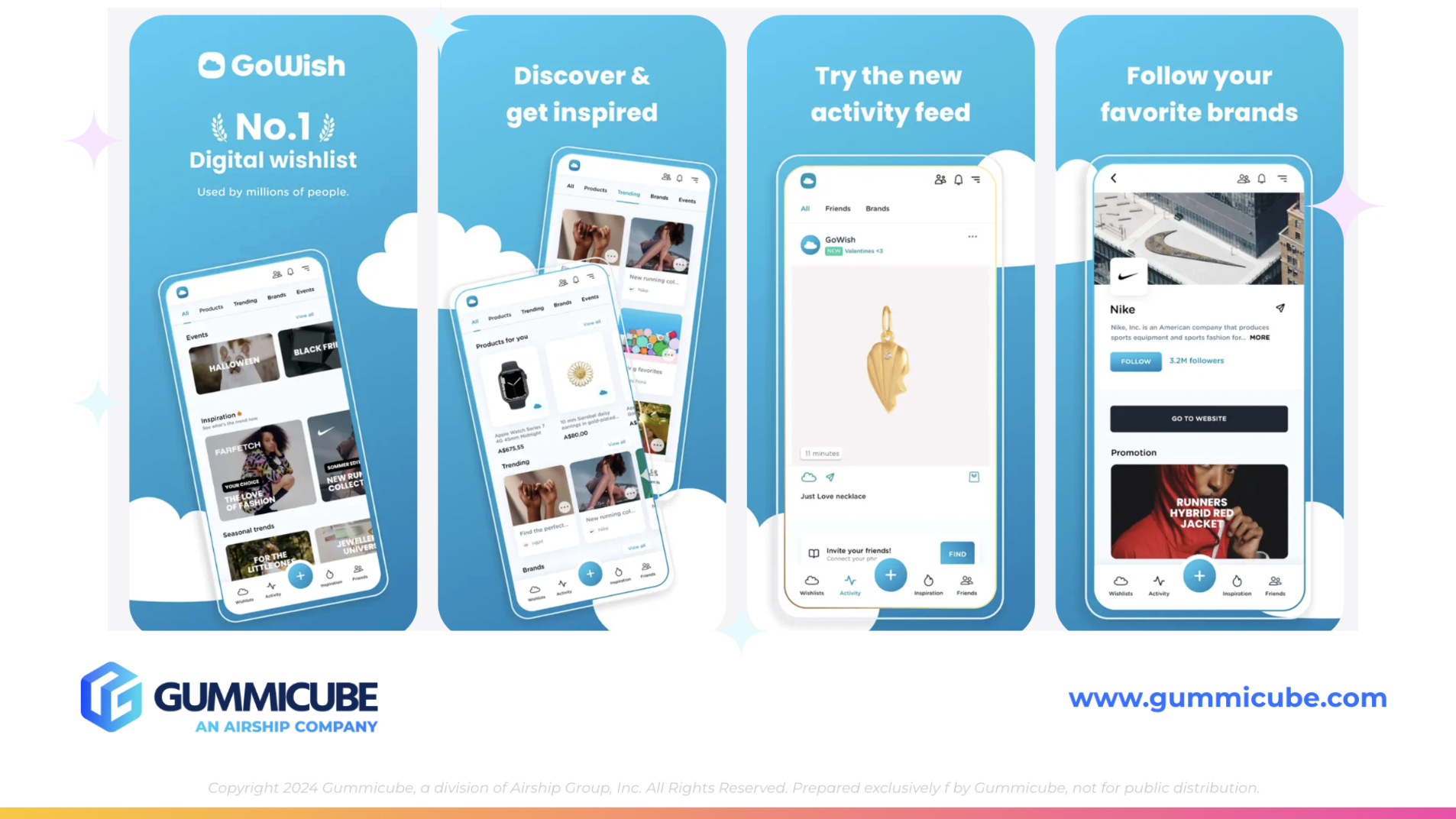
App Store Optimization Insights for Cleanup
Posted on December 19th, 2025
Cleanup demonstrates a solid foundation in their app listing, but implementing ASO best practices can help set them apart from the competition.

The holidays are fast approaching, and with them comes a surge of users searching for the perfect way to plan, organize, and share gifts. For wish list and Secret Santa apps, this is the most important time of the year, which is the digital equivalent of peak retail season. Today’s ASO spotlight takes a closer look at Elfster: The Secret Santa App, an established name in the shopping category that has helped millions of users create and manage gift exchanges for over a decade.
With over 13 years in the App Store, 301,000 ratings, and an impressive 4.9-star average, Elfster has clearly built trust and a loyal user base. Its premise is simple: make Secret Santa fun, organized, and effortless. However, in the world of App Store Optimization (ASO), long-term success requires more than a great product; it demands continuous iteration and strategic optimization at the right time.
Let’s examine what’s working in Elfster’s App Store listing, identify areas for improvement, and explore how this app can utilize ASO tools and practices to maximize discoverability and downloads ahead of the gift-giving rush.
Elfster’s app title and subtitle demonstrate a strong understanding of ASO fundamentals.
From the outset, this combination immediately communicates purpose and function. The keywords “Secret Santa,” “wish list,” and “gift registry” are seasonally charged and highly searchable terms, especially during the months of November and December. For users browsing or searching for gifting solutions, Elfster’s metadata leaves no doubt about what the app offers.
This clarity is crucial in crowded categories like Shopping, where apps compete for limited visibility during short windows of heightened activity. Elfster’s team clearly understands that metadata can be clever and clear at the same time. In that sense, the app’s metadata is already ahead of many competitors whose app titles rely on vague or branded terms without describing core functionality.
However, where Elfster succeeds in messaging, it can still evolve into seasonal keyword adaptation. ASO is a continuous cycle that requires regular attention throughout the year in order to keep your app listing fresh and competitive. As gifting season approaches, now is the time to integrate secondary keywords like holiday gift ideas, Christmas wish list, or Secret Santa generator through iterative updates and testing.

When analyzing Elfster’s App Store screenshots, the first impression is overall positive. The visuals are cohesive, modern, and engaging, with alternating iPhone mockups that create a sense of movement and flow. From a design standpoint, this layout is visually appealing and consistent with current UI trends.
That said, design can’t stand alone without legible messaging. Elfster’s creative assets are where the main app listing improvement lies. Screenshots demonstrate a critical ASO opportunity: while the imagery is strong, the text overlay is very difficult to read, both in size and contrast.
These screenshots effectively communicate functionality and trust, but their execution hinders visibility. From an ASO standpoint, screenshot text is prime real estate. Each frame should act as an ad banner that showcases messaging quickly, legibly, and directly.
By increasing text size, improving color contrast, and simplifying messaging, Elfster could greatly enhance conversion potential. Even the best metadata can only drive a certain amount of traffic. It’s ultimately the creative assets that convert searchers into downloaders.
Seasonality is one of the most underestimated elements of ASO strategy. For gifting-related apps like Elfster, optimization needs to begin weeks or months in advance of the holiday rush.
Apple’s search algorithms reward momentum. Apps that start trending for seasonal keywords in October are more likely to maintain strong positions through December. This means Elfster’s peak season starts now.
By preparing creative updates, testing seasonal metadata, and ensuring screenshots align with the emotions and intent of holiday shoppers, Elfster can capture a greater share of traffic during this critical period. For instance:
Seasonality, when used strategically, transforms ASO from a maintenance activity into a proactive growth engine.
The Shopping category specifically sees one of the largest surges in downloads from October through December. According to App Store trends, searches for keywords like “gift exchange,” “Secret Santa,” and “Christmas wish list” increase by more than double during this window.
Apps that prepare their listings early through keyword research, creative refreshes, and user engagement campaigns can capture a larger share of this rising traffic before the competition peaks. Those who delay updates often find themselves buried beneath seasonal rivals who optimized weeks earlier.
For Elfster, this means now is the critical window to refine creative, expand screenshots, and test new keyword sets. Doing so can ensure stronger positioning and visibility when shoppers are at their most active.

To understand where Elfster stands, it’s valuable to compare it with a newer but fast-growing competitor: GoWish – Your Digital Wish List, categorized under the Lifestyle app category.
GoWish has 4.8 stars across 101,000 ratings, showing steady traction with a younger user base. Its subtitle, “Create wishes & get inspired,” is similar in intent to Elfster’s but conveys a slightly broader, aspirational tone.
Where GoWish truly differentiates itself is in creative presentation.
The messages are minimal yet visually commanding. The text is large, high-contrast, and easy to read even from the search preview view. GoWish also uses all ten available screenshots, maximizing discoverability and visual storytelling opportunities.
Elfster, in contrast, currently uses only five screenshots. Expanding to ten would allow them to:
GoWish’s creative direction isn’t flawless; its messaging could be more directly tied to the core function of gift exchange, but it demonstrates the advantages of clarity and visibility. In the App Store, bold text often beats beautiful design in terms of conversion.
Elfster’s longevity in the App Store is a major advantage. With over a decade of historical data, the team can leverage ASO tools for iterative testing to strengthen both metadata and creative performance.
Through keyword performance tracking and A/B testing tools, Elfster can test variations of its title and subtitle during the pre-holiday period. Subtle shifts in keyword focus, such as testing “Secret Santa generator” vs. “Secret Santa organizer”, can reveal which search terms drive higher conversion rates.
Running tests on screenshot design (color, text size, seasonal themes) helps determine which visuals produce higher tap-through and install rates. Since App Store visitors make download decisions in seconds, visual clarity is often the deciding factor.
A/B testing seasonal versus evergreen creative sets can provide insights for future updates. For example, testing holiday-themed assets in November can inform Valentine’s or Mother’s Day iterations later in the year, both of which can be key gifting occasions.
ASO isn’t just about visibility; it’s about data-driven adaptation. By continually testing and refining, Elfster can maintain visibility not just during December but throughout every peak shopping moment of the year.
Elfster’s App Store foundation is overall strong. Its metadata is clear, its design is cohesive, and its reputation is stellar. With over 13 years of credibility and millions of loyal users, the app has everything it needs to dominate seasonal search results.
However, the competitive landscape of wish list and gifting apps demands constant iteration. Elfster’s greatest opportunities lie in:
By taking these steps, Elfster can ensure its visibility remains as strong as its user ratings. Making even the smallest creative changes could help the app stand out as an example of strategic ASO execution.
ASO is never a one-time project. It’s an evolving process that rewards consistency, testing, and timing. Whether your app is entering its peak season or planning for long-term growth, now is the perfect time to revisit your App Store strategy.
If you’re ready to refine your metadata, strengthen your creative, or build an A/B testing roadmap that drives measurable results, Gummicube’s ASO services can help. Let’s start a conversation about how to make your app shine.

Cleanup demonstrates a solid foundation in their app listing, but implementing ASO best practices can help set them apart from the competition.

By incorporating high-volume keywords, creatives, & A/B testing, the listing can better communicate the device’s capabilities during peak app seasonality.

Discover Mobile has a solid foundation, supported by a strong brand identity; however, ASO requires regular testing and adjustments to stay competitive.